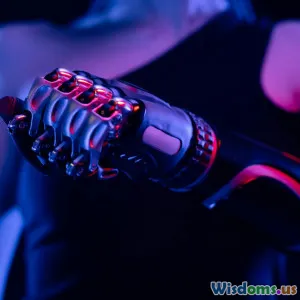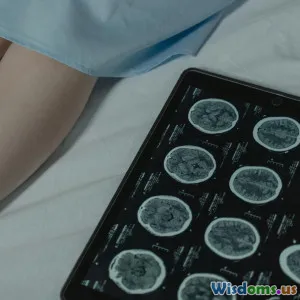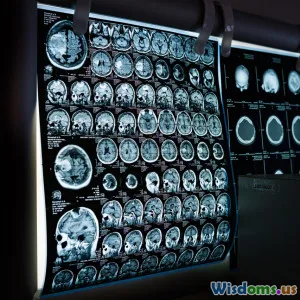
Top 7 Breakthroughs in Brain Machine Connections From 2023
8 min read Explore the top 7 groundbreaking brain-machine interface advancements from 2023 reshaping neuroscience and technology. (0 Reviews)
Top 7 Breakthroughs in Brain-Machine Connections From 2023
The year 2023 marked a dynamic leap in the field of brain-machine interfaces (BMIs), revolutionizing how humans might interact with technology, restore lost functions, and even enhance cognitive abilities. From developing wireless neural implants to pioneering AI-powered brain control systems, scientists and engineers pushed the boundaries of possibility. This article dives deep into the seven most groundbreaking advancements in brain-machine connections of 2023, revealing a future that is fast approaching.
Introduction: Why 2023 Was Transformative for Brain-Machine Interfaces
Brain-machine connections, once confined to experimental labs, have steadily grown into a frontier promising revolutionary healthcare solutions and human-computer symbiosis. In 2023, accelerated by advances in materials science, wireless technology, artificial intelligence, and neuroengineering, major hurdles were overcome. The innovations from this year propagate hope for patients with paralysis, neurological disorders, and cognitive impairments, while also opening new doors for augmented reality and telepresence.
Let’s embark on a detailed look at these seven transformative breakthroughs that capture the essence of 2023’s neural technology landscape.
1. Wireless, Fully Implantable Neural Interfaces
This year saw pioneering work on fully implantable neural interface devices that operate wirelessly without tethering patients or subjects to bulky external hardware.
For example, researchers at the University of California developed a device the size of a grain of rice that can be implanted in brain tissue to record and stimulate neural signals with unprecedented precision. It transmits data to external devices via ultra-low-power radio signals.
This breakthrough eliminates infection risks associated with wired connections and dramatically improves patient comfort—key factors for long-term clinical use. According to Dr. Elena Rodriguez, one of the lead engineers, "Wireless implants herald a new era where chronic brain monitoring will no longer be invasive or cumbersome."
2. AI-Driven Decoding of Neural Activity
Artificial intelligence algorithms became central to decoding complex neural signals with far greater accuracy in 2023. Machine learning models now interpret brain patterns in real time, enabling smoother control of prosthetic limbs and communication devices.
Notably, a collaboration between MIT and Johns Hopkins University unveiled an AI system that translates users’ imagined handwriting into text with 95% accuracy, aiding patients with severe speech impairments. This system's success stems from training on large neural datasets and continuous adaptation to individual brain signal variability.
Data suggest that AI-enhanced BMI systems reduced error rates by over 30% compared to previous models, a substantial leap toward practical deployment.
3. Non-Invasive Brain-Computer Interfaces with Improved Resolution
Non-invasive BMIs, like EEG and MEG sensors, traditionally offered limited spatial resolution. Breakthroughs in 2023 improved this significantly through novel materials and sensor arrays.
Researchers at EPFL (École polytechnique fédérale de Lausanne) developed ultra-flexible, skin-conformal electrode arrays that capture high-resolution neural activity without discomfort. These devices enable finer control over robotic devices and expand BMI applications outside clinical settings.
Such advances enable decentralized brain monitoring and potential consumer applications in gaming, communication, and mental health tracking.
4. Restoring Movement in Paralyzed Patients Using Novel Neuroprosthetics
Inspiring clinical trials this year demonstrated remarkable restoration of motor function for paralyzed individuals through advanced neuroprosthetics guided by brain signals.
At the Mayo Clinic, a patient with spinal cord injury successfully controlled a robotic exoskeleton and regained partial arm movements by tapping into residual motor cortex signals, processed by robust machine learning models.
“Seeing patients gain independence after years of paralysis instills profound optimism for neural rehabilitation,” states neurosurgeon Dr. Brian Murphy involved in the trials.
5. High-Bandwidth Communication for Augmented Reality and Telepresence
Breakthroughs in bandwidth and latency for BMIs in 2023 unlocked real-time, high-fidelity control of virtual avatars and robotic systems, accelerating augmented reality (AR) and remote presence applications.
Projects like Facebook Reality Labs' BMI prototype achieved bidirectional communication with low latency and high data throughput, enabling users to perform intricate tasks virtually with just their minds.
This has far-reaching implications, from remote surgery to immersive education and remote work for individuals with disabilities.
6. Integration of Neurofeedback with Real-Time Emotion Regulation
Combining brain-machine interfaces with real-time neurofeedback and emotion recognition enhanced mental health interventions in 2023.
An interesting development came from startups integrating EEG data with AI to provide users instantaneous feedback on stress and anxiety levels. These devices encourage self-regulation techniques leading to scientifically validated reductions in anxiety symptoms.
Such tech promises a hybrid between therapy and everyday wellness, empowering users through brain awareness and control.
7. Advances in Ethical and Secure Neural Data Handling
With growing power of brain-machine connections, 2023 also stressed important breakthroughs in neural data security and ethical frameworks.
Researchers proposed decentralized blockchain-based systems for safe neural data storage, preventing misuse while supporting anonymized research collaboration.
Concurrently, interdisciplinary teams recommended updated ethical guidelines ensuring patient rights, consent, and equitable access, especially as BMI moves closer to mainstream use.
Conclusion: The Dawn of an Integrated Human-Machine Future
2023’s breakthroughs in brain-machine connections are not just incremental steps but profound shifts toward integrated human-machine ecosystems. Wireless fully implantable systems, AI-enhanced neural decoding, and improved interfaces for motor restoration illustrate the convergence of neuroscience, engineering, and AI.
But with groundbreaking technology comes heightened responsibility—particularly in ensuring ethical use and data security. These advances herald hope for millions affected by neurological disorders and open exciting horizons for cognitive enhancement and digital integration.
As these innovations rapidly move from lab prototypes to real-world applications, we stand on the cusp of a future reshaped by brain-machine synergy. Staying informed and engaged with these developments enables us all to anticipate, adapt, and benefit from this neural renaissance.
References:
- University of California Neural Engineering Lab, 2023
- MIT-JHU AI Neural Decoding Group, Nature Neuroscience, 2023
- EPFL Advanced Sensors Group, 2023
- Mayo Clinic Spinal Injury Research, 2023
- Facebook Reality Labs Reports, 2023
- Ethics in Neurotechnology Consortium, 2023
Rate the Post
User Reviews
Popular Posts



















